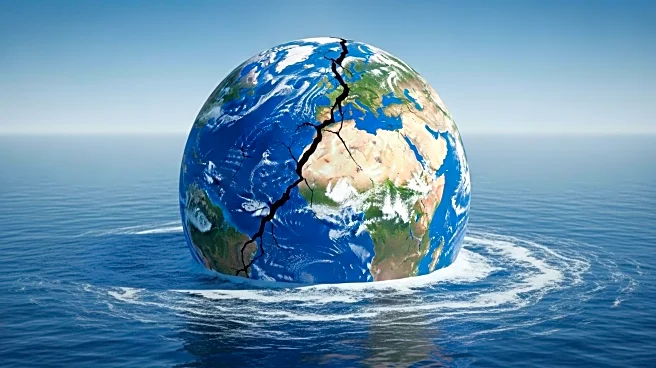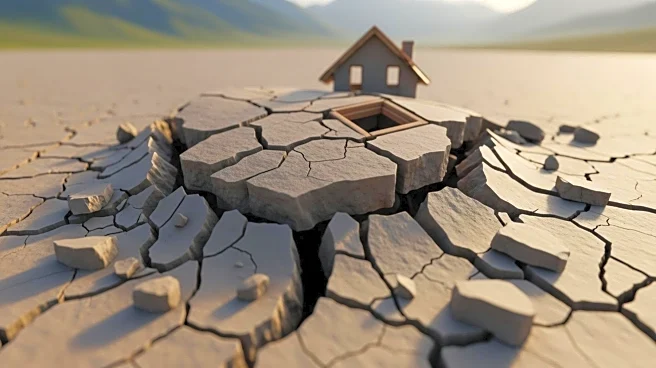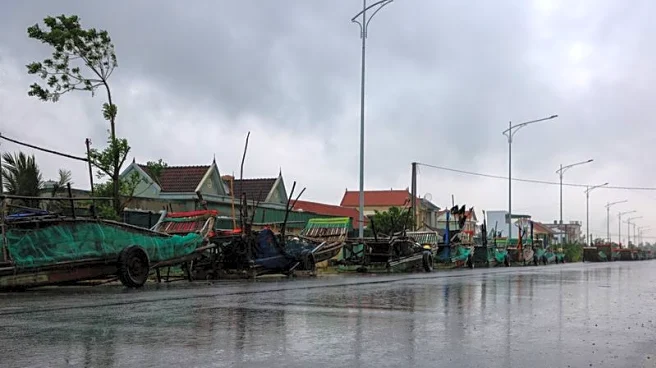What's Happening?
A powerful 6.9-magnitude earthquake struck the central Philippines on September 30, 2025, prompting the Philippine Institute of Volcanology and Seismology (PHIVOLCS) to issue a tsunami alert for the Leyte, Biliran, and Cebu provinces. The earthquake occurred around 10 p.m. local time, with its epicenter located just west of Palompon in the Philippines, close to the city of Bogo in Cebu province. The quake, which was only about 10 kilometers underwater, resulted in significant damage, including the collapse of a sports complex in San Remigio, where at least 13 people died. The Philippine Red Cross reported that paramedics treated at least 60 people for injuries across three provinces. The earthquake also caused structural damage to churches and schools, and a fire broke out at a mall in Cebu province. PHIVOLCS recorded multiple aftershocks following the initial quake and later canceled the tsunami alert. Additionally, a minor eruption from the Taal volcano was recorded, producing a 2,500-meter-high plume.
Why It's Important?
The earthquake highlights the vulnerability of the Philippines to seismic activity due to its location on the Pacific 'Ring of Fire,' a region known for frequent earthquakes and volcanic eruptions. The immediate impact includes loss of life, injuries, and significant structural damage, which could strain local emergency services and infrastructure. The event underscores the importance of disaster preparedness and response in the region, as well as the need for resilient infrastructure to withstand such natural disasters. The economic impact could be substantial, affecting local businesses and communities, particularly in the affected provinces. The response from the government and aid organizations will be crucial in mitigating the long-term effects on the population and economy.
What's Next?
In the aftermath of the earthquake, the focus will likely shift to rescue and recovery efforts, with the government and aid organizations working to provide immediate assistance to those affected. Assessments of structural damage will be necessary to ensure the safety of buildings and infrastructure. The government may also review and potentially enhance its disaster preparedness and response strategies to better handle future seismic events. The international community may offer support and aid to assist in recovery efforts. Additionally, there may be increased attention on improving building codes and construction practices to enhance resilience against future earthquakes.
Beyond the Headlines
The earthquake serves as a reminder of the broader challenges faced by countries located in seismically active regions. It raises questions about the adequacy of current infrastructure and emergency response systems in dealing with such disasters. The event may prompt discussions on the need for international cooperation in disaster risk reduction and the sharing of best practices in earthquake preparedness and response. It also highlights the potential for climate-related events to exacerbate the impact of natural disasters, as changing weather patterns can influence the frequency and intensity of such events.













